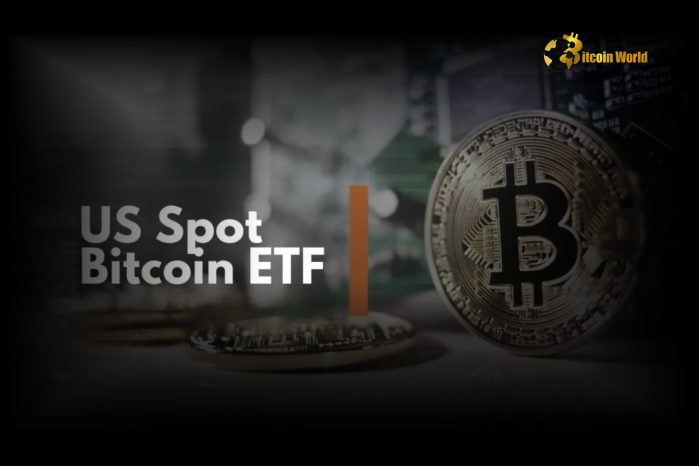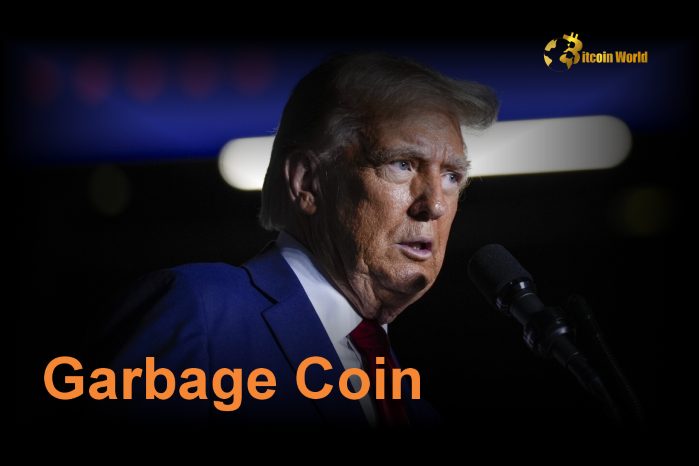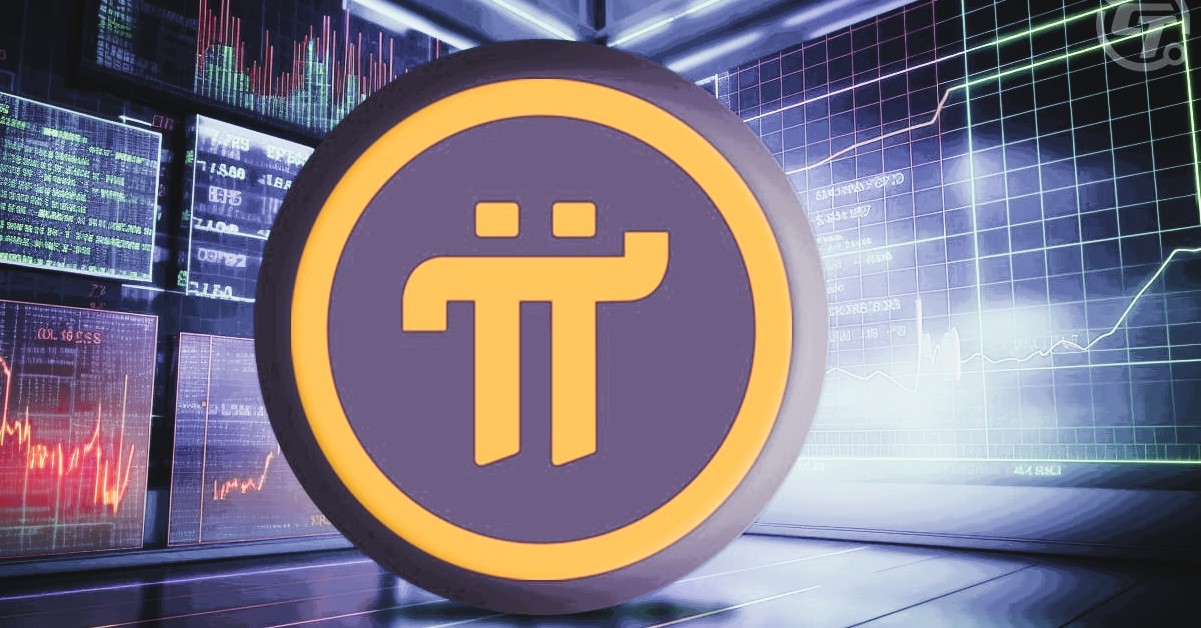
Bitcoin’s price struggles continue as the asset was violently rejected at $100,000 yesterday and pushed south by over four grand in hours. Nevertheless, many altcoins are in even worse condition, with massive double-digit losses on a weekly scale. BTC Up and Down It was a painful week for the primary cryptocurrency, which started during the previous weekend with a price slump from $102,000 to $97,000 on Sunday morning after Trump’s tariffs against China, Mexico, and Canada. The situation worsened on Monday morning with another nosedive to under $92,000. However, the cryptocurrency exploded out of the blue at this point and added ten grand within hours to spike above $102,000. That was short-lived, though, as it quickly lost the six-digit price tag and headed toward $97,000. After a few days of sideways action around that line, BTC jumped to just over $100,000 on Friday. Yet, the bears were quick to intercept the move and didn’t allow a further increase. Moreover, the rejection was quite brutal as it pushed bitcoin south to under $96,000. The asset now struggles to reclaim that level, and its market capitalization is close to breaking below $1.9 trillion. Its dominance over the alts , though, is quite high (close to 59% on CG), as most of them have been hit harder. BTCUSD. Source: TradingView Alts Back in Red The alternative coins suffered even more than BTC, and many continue to be well in the red. Ethereum has dumped by 4% over the past day alone and struggles to remain above $2,600. Chainlink, SUI, AVAX, ADA, and XMR are the other substantial price losers from the larger-cap alts, with declines of up to 7%. DOGE , BNB, SOL, and HBAR are also in the red, albeit in a less painful manner. XRP and TRX are among the few alts with minor gains over the past day. Nevertheless, the total crypto market cap has shed another $80 billion since yesterday and is down to $3.250 trillion on CG. Cryptocurrency Market Overview. Source: QuantifyCrypto The post These Altcoins Extend Losses as BTC Faced Rejection at $100K (Weekend Watch) appeared first on CryptoPotato .
Crypto Potato
You can visit the page to read the article.
Source: Crypto Potato
Disclaimer: The opinion expressed here is not investment advice – it is provided for informational purposes only. It does not necessarily reflect the opinion of BitMaden. Every investment and all trading involves risk, so you should always perform your own research prior to making decisions. We do not recommend investing money you cannot afford to lose.
Trump Memecoin May Face Future Tax Challenges, Says Cryptocurrency Tax Platform

Trump Memecoin and Tax Implications: FinTax Warns of Future Challenges The launch of Donald Trump’s memecoins , including TRUMP , has sparked widespread interest in the cryptocurrency world. However, according to a report by cryptocurrency tax platform FinTax , these tokens could encounter tax-related challenges in the future. The report, shared on X, highlights the complexities of calculating capital gains taxes for volatile assets like TRUMP. As memecoins continue to rise in popularity, their rapid price fluctuations and unique characteristics pose significant difficulties for tax compliance and reporting. Understanding Capital Gains Tax in Crypto Cryptocurrencies, including memecoins, are treated as capital assets for tax purposes in many jurisdictions, including the United States. Capital Gains Tax Basics Cost Basis: The cost basis is the original price paid for the asset, which serves as the reference point for calculating taxable gains or losses. Capital Gain or Loss: If the asset is sold for more than the purchase price, the difference is a taxable gain. If sold for less, it results in a deductible loss. Short-Term vs. Long-Term Gains: Short-term gains: Held for less than one year, taxed at ordinary income rates. Long-term gains: Held for more than one year, taxed at lower rates. Challenges with Memecoins Like TRUMP 1. Price Volatility The highly volatile nature of TRUMP and similar memecoins creates significant challenges in determining the cost basis . Example: If an investor purchases TRUMP during a price spike and the price drops sharply before being sold, the calculation of capital gains becomes complicated. 2. Tracking Transactions Frequent trading, which is common with memecoins, results in numerous transactions that need to be tracked for accurate tax reporting. 3. Airdrops and Token Allocations Some memecoins are distributed through airdrops or other mechanisms, further complicating tax calculations. FinTax Analysis: “Airdropped tokens are often valued at the time of receipt, but volatile prices can make this value difficult to establish accurately.” 4. Lack of Regulation The absence of clear regulatory guidelines for cryptocurrencies in the U.S. adds another layer of complexity to tax compliance for assets like TRUMP. Potential Tax Issues for TRUMP Memecoin Investors Misreporting Cost Basis Investors may struggle to determine the correct cost basis for TRUMP due to frequent price swings. Errors in reporting can lead to penalties or audits. Short-Term Trading Taxes Memecoins are often traded quickly for short-term profits, resulting in higher tax rates on gains. Loss Deduction Limits Taxpayers can only deduct capital losses up to $3,000 per year against ordinary income, potentially leaving large losses unused. Cross-Border Taxation TRUMP’s global appeal may result in tax complications for international investors, particularly in countries with different crypto tax laws. FinTax’s Recommendations FinTax advises both individual investors and regulatory bodies to address the unique challenges posed by memecoins: 1. For Investors Maintain Detailed Records: Track all transactions, including purchase price, sale price, and dates. Use Tax Software: Cryptocurrency-specific tax platforms can automate calculations and ensure compliance. Understand Tax Obligations: Consult with a tax professional to avoid misreporting. 2. For Regulators Clear Guidelines: Establish straightforward rules for calculating cost basis and reporting gains for volatile assets like TRUMP. Education Campaigns: Inform the public about crypto tax responsibilities to reduce errors and non-compliance. Comparing TRUMP to Other Cryptocurrencies Aspect TRUMP Memecoin Traditional Cryptocurrencies Volatility Extremely high Moderate to high Cost Basis Complexity High Moderate Tax Reporting Challenging Relatively easier Regulatory Clarity Limited Growing The Role of Volatility in Crypto Taxation 1. Impact on Tax Burden High volatility can lead to unexpected tax liabilities when gains occur during rapid price increases. 2. Realized vs. Unrealized Gains Taxes are only due on realized gains (when the asset is sold), but tracking unrealized gains is essential for planning. 3. Risk of Overpayment or Underpayment Miscalculations due to volatile prices increase the risk of overpaying or underpaying taxes. Conclusion The launch of TRUMP memecoin highlights the growing influence of cryptocurrencies on financial markets, but it also underscores the challenges of navigating tax obligations in this unregulated space. FinTax’s warning serves as a reminder for investors to prioritize accurate record-keeping and consult professionals to avoid costly mistakes. As the cryptocurrency market evolves, both investors and regulators must adapt to its complexities, ensuring a balance between innovation and compliance. To learn more about the innovative startups shaping the future of the crypto industry, explore our article on latest news , where we delve into the most promising ventures and their potential to disrupt traditional industries. Crypto Potato

Hyperliquid’s Explosive Trading Volume: DeFi Exchange Rockets with 4x Growth
The decentralized finance (DeFi) space is buzzing with activity, and one platform is making waves with its phenomenal growth. Hyperliquid , a decentralized perpetual futures exchange, has reported a staggering fourfold increase in its monthly trading volume since October. This explosive surge, highlighted by crypto research firm Messari, signals a significant shift in the decentralized exchange landscape. Let’s delve into what’s fueling this impressive ascent and what it means for the future of DeFi and crypto futures trading. What’s Driving Hyperliquid’s Trading Volume Surge? A fourfold increase in trading volume isn’t just a minor uptick; it’s a rocket launch in the crypto world. Several factors could be contributing to Hyperliquid’s meteoric rise. To understand this better, let’s break down some potential drivers: Growing Interest in Decentralized Exchanges (DEXs): The broader trend in the crypto market is a growing preference for decentralized platforms. Users are increasingly valuing self-custody, transparency, and reduced reliance on centralized intermediaries. Hyperliquid, as a decentralized exchange , directly benefits from this trend. Perpetual Futures Demand: Perpetual futures contracts are a popular instrument for traders seeking leverage and exposure to crypto assets without actually holding the underlying asset. Hyperliquid specializes in perpetual futures, tapping into a significant and active market segment. Platform Features and User Experience: Hyperliquid might be offering unique features, a user-friendly interface, or competitive trading fees that are attracting users from other platforms. Details about specific advantages would shed more light on their appeal. Market Conditions: The overall market sentiment and volatility in the crypto market can significantly impact trading volumes. Increased market activity generally leads to higher trading volumes across exchanges, including decentralized exchanges like Hyperliquid. Community and Marketing Efforts: Effective community building and marketing initiatives can play a crucial role in attracting users and boosting platform awareness. Hyperliquid’s strategies in this area could be contributing to its growth. Hyperliquid: A Deep Dive into the Decentralized Exchange For those less familiar, let’s clarify what Hyperliquid is and why it’s considered a decentralized exchange . Unlike centralized exchanges like Binance or Coinbase, DEXs operate without intermediaries. Here’s a quick comparison: Feature Centralized Exchange (CEX) Decentralized Exchange (DEX) Custody of Funds Exchange holds user funds Users retain control of their funds (self-custody) Transparency Less transparent, order books are often proprietary More transparent, transactions are recorded on the blockchain Regulation Subject to stricter regulations Generally less regulated (though this is evolving) Security Risks Centralized target for hacks, risk of exchange failure Lower risk of exchange-level hacks, smart contract risks exist Control Users have less control over the platform’s operations Users may have more governance rights in some DEX models Hyperliquid, being a decentralized exchange , offers users greater control and transparency. This aligns with the core principles of DeFi, which aim to create a more open, accessible, and trustless financial system. The Allure of Crypto Futures and Hyperliquid’s Specialization Crypto futures contracts are derivative instruments that allow traders to speculate on the future price of cryptocurrencies. Perpetual futures, in particular, are popular in the crypto space because they don’t have an expiry date, unlike traditional futures contracts. This means traders can hold positions indefinitely, making them suitable for both short-term and long-term strategies. Hyperliquid’s focus on perpetual futures positions it strategically within the DeFi ecosystem. The platform provides: Leverage Trading: Futures contracts allow traders to use leverage, amplifying both potential profits and losses. This can be attractive to experienced traders seeking to maximize returns. Hedging Opportunities: Futures can also be used to hedge against price volatility. Investors holding spot crypto assets can use futures to protect against potential downturns. 24/7 Trading: Like the broader crypto market, Hyperliquid operates 24/7, providing continuous trading opportunities. By specializing in crypto futures within a decentralized framework, Hyperliquid caters to a growing segment of crypto users who are seeking sophisticated trading tools within the DeFi space. DeFi Growth and Hyperliquid’s Role in the Ecosystem Hyperliquid’s surge in trading volume is not just an isolated event; it’s indicative of the broader DeFi growth trajectory. The DeFi sector continues to expand, attracting more users and capital as it matures. Here’s how Hyperliquid’s success fits into the bigger picture of DeFi growth : Increased Adoption of DeFi Protocols: Hyperliquid’s growth reflects the increasing adoption of DeFi protocols in general. As more users become comfortable with decentralized technologies, platforms like Hyperliquid are poised to benefit. Innovation in DeFi Trading Infrastructure: The success of platforms like Hyperliquid encourages further innovation in DeFi trading infrastructure. This could lead to more efficient, user-friendly, and feature-rich decentralized exchanges in the future. Challenging Centralized Exchanges: The rise of Hyperliquid and other successful DEXs poses a growing challenge to centralized exchanges. While CEXs still dominate in terms of overall volume, DEXs are carving out a significant and expanding niche. Expanding DeFi Use Cases: As DeFi growth continues, we can expect to see an expansion of use cases beyond just trading. Decentralized lending, borrowing, asset management, and other financial services are all part of the evolving DeFi landscape. Actionable Insights: What Does This Mean for Crypto Traders? Hyperliquid’s explosive trading volume increase presents several actionable insights for crypto traders and enthusiasts: Explore Decentralized Exchanges: If you haven’t already, consider exploring decentralized exchanges like Hyperliquid. They offer unique benefits in terms of control and transparency. Understand Perpetual Futures: For those interested in advanced trading strategies, learning about perpetual futures and how they work can open up new opportunities. Monitor DeFi Trends: Keep an eye on the overall DeFi sector and platforms like Hyperliquid. Their growth can provide valuable insights into the evolving crypto landscape. Risk Management is Key: Remember that trading, especially with leverage, involves risks. Always practice sound risk management and only trade with funds you can afford to lose. Conclusion: Hyperliquid’s Ascendancy – A Glimpse into DeFi’s Future Hyperliquid’s phenomenal fourfold increase in monthly trading volume is more than just a statistic; it’s a powerful indicator of the growing momentum behind decentralized exchanges and the broader DeFi movement. This explosive growth underscores the increasing user appetite for decentralized, transparent, and self-custodial financial platforms. As DeFi continues to mature and innovate, platforms like Hyperliquid are likely to play an increasingly important role in shaping the future of finance. The surge in activity on Hyperliquid serves as a compelling testament to the disruptive potential of decentralized technologies and their capacity to transform the way we interact with financial markets. To learn more about the latest crypto market trends, explore our article on key developments shaping Ethereum price action. Crypto Potato











